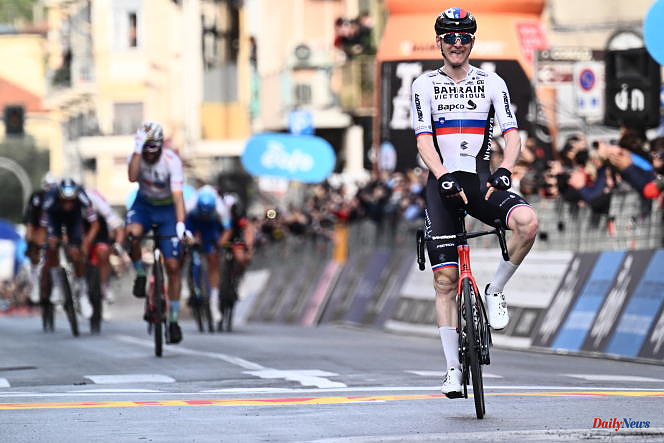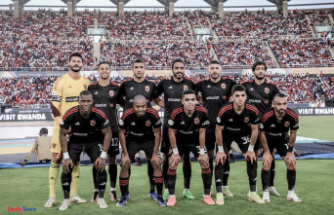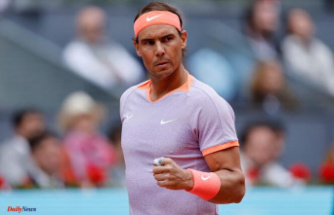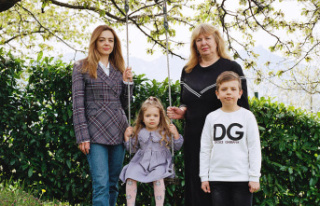Milan-San Remo often boils down to a hill climb. A long procession of 285 kilometers from the Lombard capital to Poggio, a steep path whose foot is placed 9.2 km from the finish on via Roma de San Remo. On Saturday March 18, the 114th edition of the first "monument" (the most prestigious one-day events) of the cycling season should not escape the norm.
Added in 1960 by the organizer to make the route more difficult, the Poggio, named after a hamlet overlooking the Ligurian Sea, is almost insignificant in profile (3.6 km at 3.7%). And yet, every year, he torments the legs that climb him at breakneck speeds. Since 2016 and the victory of Frenchman Arnaud Démare, punchers have been enjoying themselves there. But as slips Niccolo Bonifazio, rider of the Intermarché-Circus-Wanty team who walks the roads of Milan-San Remo in training, "the climb of Poggio ends at the bottom of the descent".
Matej Mohoric will not say otherwise. In 2022, the Slovenian had won thanks to a descent where he had taken all the risks, his nose in the exhaust pipes of the motorcycles of the organization, brushing the fall twice. "I destroyed cycling," he gloated after crossing the finish line, pointing to the dropper post he was the only one in the peloton to have. This gadget, allowing you to adjust the saddle height using a wheel located in the hollow of the handlebars, allows you to lower the center of gravity to obtain an aerodynamic gain but also better control of your machine.
Nobody knows to what extent this technological contribution was decisive in gleaning his first "monument" as Matej Mohoric is, whatever his mount, among the best downhill riders in the peloton. The rider of the Bahrain-Victorious team is not a pioneer: the Belgian Eddy Merckx, in 1969, and the Irishman Sean Kelly, in 1992, had already forged their victory in the toboggan which leads back to San Remo. But, in 2022, Mohoric reiterated the importance of this descent for those who hope to hold one of the leading roles during the "Primavera", the nickname of this classic which accompanies or precedes the arrival of spring. .
"No time to breathe"
“Since the slopes are not so demanding, the descent can become fundamental or even decisive,” confirms Jacopo Guarnieri, rider of the Lotto Dstny team, who trains regularly on the slopes planted with lemon trees of Poggio. “It is important but the climb remains essential, adds Frenchman Anthony Turgis (TotalEnergies), second in 2022. You have to be among the best runners at the top, those who can play for victory. "The position at the top is all the more important as it is "difficult to gain places in the descent because the road is not wide", specifies Niccolo Bonifazio, fifth of the "Classicissima", the other nickname of the race, in 2015.
The slide begins with a left turn after a famous red telephone box, an obsolete object that resists modernity. Then, the slope descends for three kilometers with a gradient (-4.6%) greater than the climb (3.7%), without being dizzying. A total of thirty curves and four hairpins on a road that winds between residential walls and where many runners have seen their dreams of success shattered. The maximum speed is around 70 km/h for about three minutes and thirty seconds of adrenaline. "Three minutes and ten seconds in training on the open road," added Niccolo Bonifazio. Not to be reproduced...
"It's a descent where you sprint every time you come out of a corner," recalls Norwegian Thor Hushovd, twice third in Milan-San Remo (2005 and 2009). This need to boost the pace is also what makes this technical and winding descent particularly decisive after already six hours in the saddle, the last of which was swallowed at full speed.
"The biggest difference is not the descent itself, but the way you do it after six hours of cycling and with lactic acid in your legs," says Jacopo Guarnieri. It hurts as much as the climb. Niccolo Bonifazio agrees: “I analyzed my data from 2015, the heart rate did not go down compared to the ascent because of the braking and the restarts. It's really tiring, you don't have time to breathe. »
Careful recognition
Embedded in this frenetic tempo, a single small error can cost dearly and fracture the group of runners who are vying for victory. A fine balance as "fatigue plays a big role, which leads to errors in trajectory and vigilance", explains Anthony Turgis. "Lack of lucidity can cause falls," continues Jacopo Guarnieri.
Hence the importance of making a careful reconnaissance of the route, especially if you want to raise your arms on via Roma, this commercial artery on which the finish line is drawn. "I often recognize her twice before the race," Turgis said. The goal is not to go fast, quite the contrary, but to do it slowly, sometimes getting off the bike to get as many bearings as possible. »
"After 300 km, it's not always easy to remember whether to brake at each turn or if it's going full throttle", decrypts Thor Hushovd, retired since 2014. To hell with the idea of unplugging the brain in this tricky part, concentration skills can, on the contrary, make the difference.
The bottom of the descent is also a strategic place. When the riders join the main road, they have 2.2 km to go and only two turns. The "Primavera" has often decanted at this precise moment, when the denouement approaches and the survivors look at each other, spy on each other. "You can attack if you come from behind and you come with speed", analyzes Thor Hushovd, who could not take the wheel of the Swiss Fabian Cancellara in this case, in 2008. The Belgian Jasper Stuyven had managed to surprise the favorites in this way in 2021.
With or without a telescopic saddle, the descent of the Poggio once again risks delivering its truth around 5 p.m.












